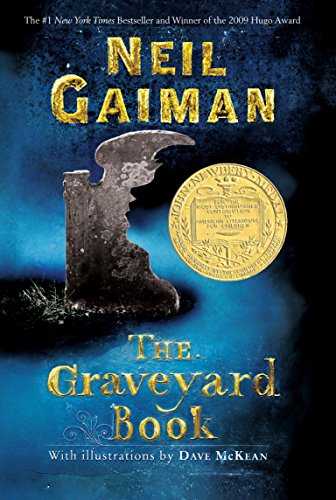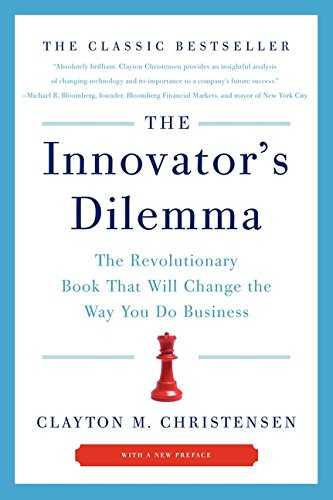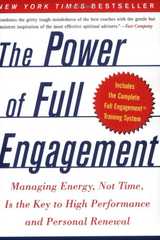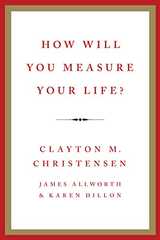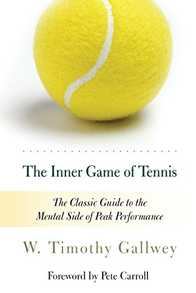
The Inner Game of Tennis: The Classic Guide to the Mental Side of Peak Performance
byW. Timothy Gallwey
The Inner Game of tennis is about reaching a state of peak mental performance, through the art of relaxed concentration. The author talks about two states within us, Self 1, the teller and Self 2, the doer. The key is improving the relationship between the conscious teller and the natural capabilities of Self 2, enabling one to turn thoughts into fluid action.
When you attain mental peak performance, you will learn how to get the clearest possible picture of your desired outcomes, how to trust self 2 to perform at its best and learn from both successes and failures, and how to see “non-judgmentally” – that is, to see what is happening rather than merely noticing how well or how poorly it is happening. The Inner game of Tennis uses tennis as a medium to discuss these skills.
The most indispensable tool for human beings in modern times is the ability to remain calm in the midst of rapid and unsettling changes; this is an important book to help you get there.
Motivations to Read
Even though I haven't played tennis seriously, I respect the use of the game as a form to teach the execution of reaching a state of peak mental performance which goes hand in hand with flow.
3 Reasons to Read
- Learn how to Improve your focus
- Work towards mental peak performance
- Learn how to bring peace to the two selves within you
Notable Quotes
When we plant a rose seed in the earth, we notice that it is small, but we do not criticize it as "rootless and stemless." We treat it as a seed, giving it the water and nourishment required of a seed. When it first shoots up out of the earth, we don't condemn it as immature and underdeveloped; nor do we criticize the buds for not being open when they appear. We stand in wonder at the process taking place and give the plant the care it needs at each stage of its development. The rose is a rose from the time it is a seed to the time it dies. Within it, at all times, it contains its whole potential. It seems to be constantly in the process of change; yet at each state, at each moment, it is perfectly all right as it is. - W. Timothy Gallwey When the mind is free of any thought or judgment, it is still and acts like a mirror. Then and only then can we know things as they are. - W. Timothy Gallwey Fortunately, most children learn to walk before they can be told how to by their parents. - Zach Kleiman
The Inner Game of Tennis: The Classic Guide to the Mental Side of Peak Performance Notes & Summary
THE INNER GAME OF TENNIS
Every game is composed of two parts, an outer and inner game.
The Outer Game: External opponent or obstacle that is necessary to overcome to reach an external goal.
The Inner Game: Internal opponent. The game that takes place in the mind of the player. Inner obstacles like lapses in concentration, nervousness, self-doubt and self-condemnation.
The game to overcome all habits of mind which prevent excellence in performance.
Thesis: Neither mastery nor satisfaction can be found in playing any game without giving some attention to the relatively neglected skills of the inner game.
Tennis is used as the medium at which the author explores the potential within the human body and the quest of improving your inner game.
One of the most common complaints of athletes,
"It's not that I don't know what to do, it's that I don't do what I know!"
Another: "I'm my worst enemy, I usually beat myself."
In instructing a student, Timothy(author) wanted him to watch him carefully as he hit ten forehand swings, and for him not to think about what the instructor was doing, but to try to grasp a visual image of the forehand.
It's hard to let your mind take a backseat and let your body have control.
Without uttering more words as he instructed with his body, Timothy learned what all good pros and students of tennis must learn: that images are better than words, showing better than telling, too much instruction is worse than none, and trying with too much thought often produces negative results.
Playing Out of Mind
A player who is "unconscious" has a mind that is so concentrated, so focused that it is still. It becomes one with what the body is doing, and the unconscious or automatic functions are working without interference from thoughts.
The Discovery of the Two Selves
The author reached a breakthrough in this concept when he observed how players were talking to themselves in 3rd person.
I.e., A player named Tom saying, "Come on, Tom, meet the ball in front of you."
The author then asked himself, "Who was talking to whom?"
"I" and "Myself" are two separate entities.
"I" gives the instructions, and "Myself" performs the actions.
The relationship between Self 1(teller) and Self 2(doer) is the prime factor in determining one's ability to translate their knowledge of technique into effective action.
Self 2(doer) includes the conscious mind and nervous system and is aware of Self 1's(teller) intentions.
Conflict comes when Self 1 does not trust Self 2.
Internal Skills to Bridge the Two Selves
- Learning how to get the clearest possible picture of your desired outcomes.
- Learning how to trust Self 2 to perform at its best and learn from both successes and failures.
- Learning to see what is happening rather than merely noticing how well or how badly it is happening(judgmental).
The constant thinking of Self 1, the ego-mind causes interference with the natural capabilities of Self 2.
Quieting Self 1 leads to better harmony.
Being "In the Zone" is a phrase commonly used for this inner harmony.
When you unlearn how to be judgmental, it is possible to achieve spontaneous, focused play.
Observations of non-judgment and judgment. In a tennis match, the umpire neither frowns nor smiles, he simply calls the ball as he sees it.
Watching the player, of course, they are more emotionally invested, and you can see it from their facial reactions. But there is also added judgment and evaluation to their events, in the "goodness" or "badness" while they are playing.
The problem is that it's the initial act of judgment that kicks of the thinking process, which interferes with Self 2's actions.
Now the player, Tries too hard to correct themselves, and their muscles become tenser and less fluid.
Once the judgmental mind establishes a self-identity based on it's negative judgments, the player eventually becomes what they think, often for the worse.
You can reduce the judgement by seeing events as they are and not adding anything on to them. It can be slowed by using descriptive words that are more nonjudgmental.
When the mind is free of any thought or judgment, it is still and acts like a mirror. Only then can we know things as they are.
Awareness of what is
In the game of tennis, there are two important things to know. The first is where the ball is. The second is where the racket head is.
You shouldn't have to think about where your racket head is; you must feel where it is. Feeling it gives you the knowledge of where it is. But your eye has to stay on the ball.
The First Inner skill to be developed in the Inner Game is nonjudgmental awareness.
"Unlearning" judgment reveals that we don't need the motivation of a reformer to change our "bad" habits. By being more keenly aware, our natural learning process will allow us to correct over time.
Not all remarks towards oneself are judgments. Acknowledgment of and respect for one's capabilities support trust in Self 2(doer). Self 1's judgments, on the other hand, attempt to manipulate and undermine that trust.
Self-confidence is a vital ingredient for peak performance.
Self 2 possess great inner intelligence; the psychical body, including the mind, conscious and unconsciousness and the nervous system. Billions of cells maintain a beautiful orchestration within you.
Reflect on the silent intelligence inherent in all Self 2 actions, our attitude of arrogance and mistrust will change, reducing unnecessary self-instructions and criticisms.
"Trust thyself" in application to tennis means trusting your body and letting it hit the ball, not making it hit the ball.
I love this statement by the author:
Fortunately, most children learn to walk before they can be told how by their parents. Children not only learn how to walk very well, buy they gain confidence in the natural learning process which operates within them.
The actions of Self 2 are based on information it has stored in it's memory of past actions of itself or the observed actions of others.
As one practice, Self 2 refines and extends the information in its memory banks.
The more awareness one can bring to bear on any action, the more feedback one gets from the experience, and the more naturally one learns the technique that feels best and works best.
Communication with Self 2
Asking For Results
Give Self 2 a clear visual image of the results you desire.
Allow your body to do whatever you have to do to get there.
Asking For Form
Give Self 2 a clear visual image of what you are asking it to do.
Asking For Qualities
Give Self 2 the role and qualities of who you want to be.
Letting go of judgments, the art of creating images and "letting it happen" are three of the basic skills involved in the Inner Game.
We let ourselves lose touch with our ability to feel our actions, by relying too heavily on instructions, we compromised our access to our natural learning processes and our potential to perform.
We need to learn how to feel again and learn how to learn again.
When it comes to physical improvement, the experience is the best teacher.
Technical instruction derived from experience can help you guide your experiential discovery.
The best use of technical knowledge is to communicate a hint toward the desired destination.
The hint can be delivered verbally or demonstrated in action, but it is best seen as an approximation of a desirable goal to be discovered by paying attention to each stroke, and feeling one's way toward what works for that individual.
How to Watch the Pros
You can learn a great deal by watching pro players, but first, you have to learn how to watch.
Watch without assuming that how the pros perform is how you should before. In many cases, trying to imitate at the start is like trying to run before you can even crawl.
Instead, allow yourself to focus on whatever most interests you about the movements of the pro you are watching. Self 2 will automatically pick up elements of the stroke that are useful to it all discard what is not useful.
With the Inner Game approach, the final authority stays inside during the alternation between external observation (or remembrance of an external instruction) and total focus of awareness on your movements. No judgment is necessary for the process.
Here are some select examples from Tennis Strokes, their technical instruction, and their awareness instruction.
- Ground Strokes:
- Technical Instruction: Follow through at shoulder level.
- Awareness Instruction: Notice the level of your follow-through about your shoulder.
- Technical Instruction: Plant your back foot when setting up for your ground stroke.
- Awareness Instruction: Notice what percent of your weight is on your back foot as you prepare to hit ground strokes.
- Volley:
- Technical Instruction: Hit the ball in front of you.
- Awareness Instruction: Notice where you are making contact with the ball.
- Serve
- Technical Instruction: Hit the ball with your arm fully extended.
- Awareness Instruction: Notice the degree of bend in your elbow at the moment of impact with the ball.
Changing Habits
When one learns how to change a habit, it is a relatively simple matter to learn which ones to change. Once you learn how to learn, you have only to discover what is worth learning.
The Inner Game way of learning is relying more on the natural learning process; childlike in immersion and growth.
It is difficult to break a habit when there is no suitable replacement for it, and when we become moralistic about our habits.
Instead, we should observe the function these habits are serving, so that if we learn a better way to achieve the same end, we can replace them.
It is difficult to become aware of the function of any pattern of behavior while we are in the process of blaming ourselves for having a "bad habit."
A child doesn't have to break the habit of crawling because he doesn't have to think of it as a habit. He simply leaves it as he finds walking an easier way to get around.
Focus on starting new habits, and not as much as fighting old ones.
Traditional way we have been taught to learn, contrasted with the Inner Game of learning:
The Unusual Way of Learning
Step 1: Criticize or Judge Past behavior
Step 2: Tell Yourself to Change, Instructing with Word Commands Repeatedly
Step 3: Try Hard; Make Yourself Do it Right
Step 4: Critical Judgment About Results Leading to a Self 1 Vicious Cycle
The Inner Game Way of Learning
Step 1: Observe Existing Behavior Nonjudgmental
Step 2 Picture Desired Outcome
Step 3: Let it Happen! Trust Self 2
Step 4: Nonjudgmental, Calm-Observation of the Results Leading to Continuing Observation and Learning
Concentration: Learning to Focus
Fighting the mind does not work. What works best is learning to focus it.
One one discovers the state of a still mind; a problem can occur where Self 1(teller) tries to take credit and believes itself to be still in control. This is a common impulse, which leads to a stream of more thoughts and interference from the ego.
The author points out how he does not believe that the mind can be controlled only by letting go - this is a passive process.
To still the mind one must learn to put it somewhere. It cannot just be let go; it must be focused.
When the mind is kept in the present, it becomes calm and focus arises.
Our minds desire that things be different from what they are pulling our minds into an unreal world, and consequently, we are less able to appreciate what the present has to offer.
Our minds leave the reality of the present one when we prefer the unreality of the past or future.
The Meaning of Competition
In Contemporary Western culture, there is a great deal of controversies about competition.
One side views it as good for western progress, and another side views competition as bad, seeing it as divisive.
In sports, that same side would prefer non-completive sports as they view the most competitive ones as legalized hostility.
There are some truths to it, as some people use competitive sports as an outlet for venting aggression and stress.
Need to prove oneself often comes from insecurity and self-doubt.
Competition in comparison and when one's self-worth is tied to their performance leads to a compulsion that one has to succeed to feel good about themselves.
The tragedy of this belief is not that they fail to find the success they seek, but that they will not discover the love or even the self-respect they were led to believe will come of it.
The author reflected on a conversation he had with his father on the meaning of winning and competition.
His father agreed that some parts of competition are needed, then the conversation began to touch on the core meaning of winning.
His father turned to surfing to explain competition.
Here are some snippets from the exert:
Dad asked, "But don't surfers, in fact, compete against the waves they ride? Don't they avoid the strength of the wave and exploit it's weakness."
"Yes, but they're not competing against any person; they're not trying to beat anyone," I replied.
"No, but they are trying to make it to the beach, aren't they?"
"Yes, but the real point for the surfer is to get into the flow of the wave and perhaps to achieve oneness with it."
Dad was right; the surfer does want to ride the wave to the beach, yet he waits in the ocean for the biggest wave to come along that he think he can handle.
The surfer waits for the big wave because he values the challenge it presents.
He values the obstacles the wave puts between him and his goal of riding the ave to the beach, because those very obstacles, the size and churning power of the wave draw from the suffer his greatest effort. The focus necessary to ride the big wave allows the surfer to realize the true limits of his capabilities.
The obstacles are a very necessary ingredient to this process of self-discovery.
Winning is overcoming obstacles to reach a goal, but the value in winning is only as great as the value of the goal reached.
The process can be more rewarding than the victory itself.
Once one recognizing the value of having difficult obstacles to overcome, it is easier to see the true benefits that can be gained from competitive sports.
See your competition as someone who can help you.
The duty of your opponent is to create the greatest possible difficulties for you, just as it yours to create obstacles for them. Through doing this, you give each other the opportunity to find out what heights each can rise.
True competition is identical to true competition, it is a matter of overcoming the obstacle of the other.
A word of caution and quote the author references
" When it comes to overcoming obstacles, there are three kinds of people. The first kind sees most obstacles as insurmountable and walks away. The second kind sees an obstacle and says, I can overcome it, and starts to dig under, climb over, or blast through it. The third type of person, before deciding to overcome the obstacle, tries to find a viewpoint where what is on the other side of the obstacle can be seen. Then, only if the reward is worth the effort, does he attempt to overcome the obstacle."
Building Inner Stability
The causes of most stress can be summed up by the word attachment. Self 1 gets so dependent upon things, situations, people, and concepts within its experience that when a change occurs or seems about to occur, it feels threatened.
Freedom from stress does not necessarily involve giving up anything, but rather being able to let go of anything, when necessary, and know that one will still be all right. It comes from independence and being more reliant on one's own inner resources for stability.
Focus, trust, choice, non-judgmental awareness the tools of The Inner Game.
